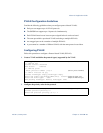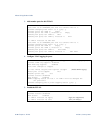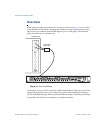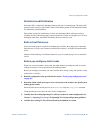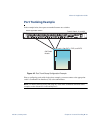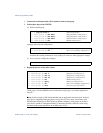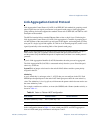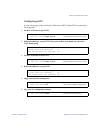Alteon OS Application Guide
96
Chapter 4: Ports and Trunking 42C4911, January 2007
Trunk group configuration rules
The trunking feature operates according to specific configuration rules. When creating trunks,
consider the following rules that determine how a trunk group reacts in any network topology:
All trunks must originate from one device, and lead to one destination device. For exam-
ple, you cannot combine a link from Server 1 and a link from Server 2, into one trunk
group.
Any physical switch port can belong to only one trunk group.
Trunking from third-party devices must comply with Cisco
®
EtherChannel
®
technology.
All trunk member ports must be assigned to the same VLAN configuration before the
trunk can be enabled.
If you change the VLAN settings of any trunk member, you cannot apply the change until
you change the VLAN settings of all trunk members.
When an active port is configured in a trunk, the port becomes a trunk member when you
enable the trunk using the /cfg/l2/trunk/ena command. The Spanning Tree
parameters for the port then change to reflect the new trunk settings.
All trunk members must be in the same Spanning Tree Group (STG) and can belong to
only one Spanning Tree Group (STG). However if all ports are tagged, then all trunk ports
can belong to multiple STGs.
If you change the Spanning Tree participation of any trunk member to enabled or dis-
abled, the Spanning Tree participation of all members of that trunk changes similarly.
When a trunk is enabled, the trunk Spanning Tree participation setting takes precedence
over that of any trunk member.
You cannot configure a trunk member as a monitor port in a port-mirroring configuration.
Trunks cannot be monitored by a monitor port; however, trunk members can be moni-
tored.
To guarantee proper trunking behavior, all ports in static trunks must be configured for
full-duplex mode (cfg/port x/gig/mode full).




